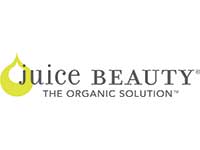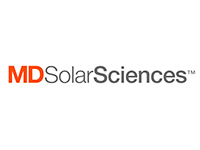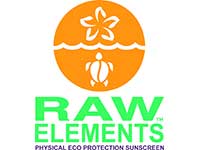

Americans do not do enough to protect their skin from sun damage and prevent skin cancer. Because we are stronger together, Environmental Working Group, forward-thinking companies and concerned citizens are teaming up to make a difference.

In light of the shortcomings of today's sunscreens, EWG suggests that you adjust your attitude about sun exposure.
Americans are being diagnosed with melanoma, the deadliest form of skin cancer, at steadily spiraling rates.
According to the National Cancer Institute, the rate of new melanoma cases among American adults has tripled since the 1970s.
Just as alarming, the melanoma death rate for white American men, the highest risk group, has also escalated sharply.
Since 2003, the rates of new melanoma cases among both men and women have been climbing by 1.7 to 1.4 percent per year, according to the federal Centers for Disease Control and Prevention (CDC 2016).
The reasons for these trends are elusive, as are strategies for preventing this deadly cancer. While the exact cause of melanoma is not known, scientists have established that risk factors for melanoma include family history, indoor tanning, the number of moles on a person’s skin, fair skin, freckles, ultraviolet radiation and severe sunburns (CDC 2014). People can control only three of these risk factors: indoor tanning, exposure to UV radiation and severe sunburns.
By all accounts, Americans are aware that excessive exposure to sunlight can cause cancer. The CDC has reported that at least 70 percent of American adults say they protect themselves from the sun. The public health agency’s surveys found that the number of Americans who say they make an effort to protect themselves from sun increased between 2005 and 2010 (NCI 2017).
The market in so-called suncare products appears to be thriving. IBISWorld, a market research company, reports that sunscreen product sales grew 2.6 percent a year between 2011 and 2016 and generated $394 million annually (IBISWorld 2016).
In December 2012, the federal Food and Drug Administration began to enforce new rules meant to improve sunscreens and consumer protection. The new rules bar certain bogus label claims – a step long sought by EWG and other public health advocates. But they allow most sunscreens to advertise “broad spectrum” skin protection. Sunscreen makers are permitted to tell consumers that with proper use, their products can help reduce the risk of skin cancer
Every major public health authority – FDA, the National Cancer Institute and the International Agency for Research on Cancer – has concluded that the available data do not support the assertion that sunscreens alone reduce the rate of skin cancer (FDA 2011a, IARC 2001b, NCI 2011).
More than three million Americans develop skin cancer each year (ACS 2017). Most cases involve one of two disfiguring but rarely fatal forms of skin cancer – basal and squamous cell carcinomas. Studies suggest that basal and squamous cell cancers are strongly related to UV exposure over years.
Several researchers have found that regular sunscreen use lowers the risk of squamous cell carcinoma (Gordon 2009, van der Pols 2006) and diminishes the incidence of actinic keratosis – sun-induced skin changes that may advance to squamous cell carcinoma (Naylor 1995, Thompson 1993).
Researchers have not found strong evidence that sunscreen use prevents basal cell carcinoma (Green 1999, Pandeya 2005, van der Pols 2006, Hunter 1990, Rosenstein 1999, Rubin 2005).
Last year, an estimated 76,000 people were diagnosed with melanoma, and 10,000 Americans died from it (NCI 2016). White Americans have much higher melanoma rates than people of other races. Men have higher melanoma rates than women. Sun exposure appears to play a role in melanoma, but it is a complex disease for which many questions have not been answered. One puzzling fact: melanomas do not usually appear on parts of the body that get daily sun exposure.
Both UVA and UVB rays can cause melanoma, as evidenced by laboratory studies on people with extreme sun exposures. In the general population, there is a strong correlation between melanoma risk and a person’s number of sunburns, particularly in childhood (Dennis 2010).
The use of artificial tanning beds dramatically increases melanoma risk (Coleho 2010). For this reason, in May 2013, FDA commissioner Margaret A. Hamburg proposed reclassifying tanning beds from “low risk” to “moderate risk” and requiring new warnings on tanning beds and sun lamps that they “can damage your skin and increase your risk of developing skin cancer.”
The risk of melanoma goes up when you use a tanning bed at any age, but the International Agency for Research on Cancer calculates that if you start using tanning beds before age 30, your risk of developing melanoma jumps by 75 percent.
Scientists don’t know conclusively whether sunscreen can help prevent melanoma. A 2011 study of sun-savvy Australians found that they cut their risk of melanoma in half by 50 when they applied SPF 15 sunscreen daily, wore hats and avoided the sun in other ways (Green 2011). Other studies have not come to clear conclusions. Some suggest that sunscreen users are at increased risk of melanoma (Gorham 2007). A number of studies conducted in the 1990s reported higher incidence of melanoma among frequent sunscreen users (Autier 1998, Beitner 1990, Westerdahl 2000, Wolf 1998). But other studies indicate that sunscreens protect against melanoma (Autier 1995, Green 2010, Westerdahl 2000, Wolf 1994).
Several factors suggest that regular sun exposure may not be as harmful as intermittent and high-intensity sunlight. Paradoxically, outdoor workers report lower rates of melanoma than indoor workers (Radespiel-Troger 2009). Melanoma rates are higher among people who live in northern American cities with less year-round UV intensity than among residents of sunnier cities (Planta 2011). Researchers speculate that higher vitamin D levels for people with regular sun exposure may play a role in reduced melanoma risk (Godar 2011, Newton-Bishop 2011, Field 2011).
Though the science is not definitive, the consensus among researchers is that the most important step people can take to reduce their melanoma risk is to avoid sunburn but not all sun exposure (Planta 2011).
EWG strongly disagrees with FDA’s decision to allow sunscreen makers to claim that their products prevent cancer. We are concerned that this policy will lead people to rely on sunscreen use alone to mitigate their cancer risk, and that this may backfire.
People who rely on sunscreens tend to burn, and burns are linked to cancer. The CDC has reported that the percentage of American adults who say they have gotten sunburned has increased since 2005 (CDC 2012).
Stanford University dermatologists who reviewed CDC national survey data concluded that people who relied solely on sunscreens for sun protection had more sunburns than people who reported infrequent sunscreen use but wore hats and clothing to shield themselves from the sun (Linos 2011). In Sweden, increased use of sunscreen by children was linked to more sunburns (Rodvall 2010). Several other studies of real-world sunscreen use found that people who use sunscreen for skin protection during periods of intense UV exposure had more sunburns (Koster 2010, Autier 2007).
Sunscreen products are not as good as they should be. Today’s sunscreens do not fully protect skin from all types of UV damage. Sunscreens were invented to stop sunburn and they are commonly indexed by their SPF rating, which describes the product’s ability to prevent burning. High-energy UVB rays burn skin and directly damage skin DNA, but they make up just 3 to 5 percent of UV radiation striking the earth’s surface.
More numerous UVA rays, by contrast, can be equally damaging without blistering the skin. Because UVA radiation penetrates deeper into the body than UVB, it can cause a different type of DNA damage than UVB (Cadet 2009).
For decades, both sunscreen manufacturers and users assumed that preventing or delaying sunburn would also avert other damage, such as skin cancer. Today, many experts realize that both UVA and UVB exposure may contribute to melanoma risk (Donawho 1996, Garland 2003, Godar 2009, Setlow 1993).
When people use sunscreen properly to prevent sunburn, they often extend their time in the sun. They may prevent burns, but they end up with more cumulative exposure to UVA rays, which inflict more subtle damage (Autier 2009, Lautenschlager 2007).
The ideal sunscreen would afford a similar level of UVB and UVA protection (Diffey 2009, Osterwalder 2010). It might also help prevent skin cancer, if it were packaged with clear information about its limitations and instructions for proper use.
The reality is that U.S. sunscreens are not as good at filtering UVA rays as many sunscreens sold in Europe. However, the companies making European sunscreen chemicals have not submitted sufficient safety data to satisfy the FDA’s questions about their potential toxicity.
The FDA’s new regulations are flawed, because they allow nearly every sunscreen already on the market to claim “broad spectrum” protection and to play a role in preventing skin cancer. Until FDA tightens its rules, Americans will continue to misuse inferior products.
The widespread marketing of sunscreens with SPF values of 51 to 100 means that consumers are increasingly – and unknowingly – selecting products with less proportional UVA protection.
As in the past, this year EWG found widespread use in sunscreen of a form of vitamin A called retinyl palmitate. It has been linked to skin cancer in FDA-sponsored laboratory studies.
References:
ACS (American Cancer Society). Key Statistics for Basal and Squamous Cell Skin Cancers. 2017. Available at www.cancer.org/cancer/basal-and-squamous-cell-skin-cancer/about/key-statistics.html
Autier P, Dore JF, Schifflers E, Cesarini JP, Bollaerts A, Koelmel KF, et al. 1995. Melanoma and use of sunscreens: an EORTC case-control study in Germany, Belgium and France. The EORTC Melanoma Cooperative Group. Int J Cancer 61: 749-55.
Autier P, Dore JF. 1998. Influence of sun exposures during childhood and during adulthood on melanoma risk. EPIMEL and EORTC Melanoma Cooperative Group. European Organisation for Research and Treatment of Cancer. Int J Cancer 77: 533-7.
Autier P, Boniol M, Dore JF. 2007. Sunscreen use and increased duration of intentional sun exposure: still a burning issue. Int J Cancer 121(1): 1-5.
Autier P. 2009. Sunscreen abuse for intentional sun exposure. Br J Dermatol 161 Suppl 3: 40-5.
Beitner H, Norell SE, Ringborg U, Wennersten G, Mattson B. 1990. Malignant melanoma: aetiological importance of individual pigmentation and sun exposure. Br J Dermatol 122(1): 43-51.
Cadet J, Douki T, Ravanat JL, Di Mascio P. 2009. Sensitized formation of oxidatively generated damage to cellular DNA by UVA radiation. Photochem Photobiol Sci 8(7): 903-11.
CDC (Centers for Disease Control). 2014. Skin Cancer Trends.http://www.cdc.gov/cancer/skin/statistics/trends.htm and risk factors and http://www.cdc.gov/cancer/skin/basic_info/risk_factors.htm
Coleho SG, Hearing VJ. 2010. UVA tanning is involved in the increased incidence of skin cancers in fair-skinned young women. Pigment Cell & Melanoma Research. 23(1): 57-63.
Dennis LK, Beane Freeman LE, Vanbeek MJ. 2003. Sunscreen use and the risk for melanoma: a quantitative review. Ann. Intern. Med.139: 966-978.
Diffey BL. 2009. Spectral uniformity: a new index of broad spectrum (UVA) protection. International Journal of Cosmetic Science 31(1): 63-68.
Donawho CK, Muller HK, Bucana CD, Kripke ML. 1996. Enhanced growth of murine melanoma in ultraviolet-irradiated skin is associated with local inhibition of immune effector mechanisms. J Immunol. 157(2):781-6.
EPA (U.S. Environmental Protection Agency). 2011. Health Effects of Overexposure to the Sun. http://www.epa.gov/sunwise/uvandhealth.html (Last updated Dec 16, 2011).
FDA (Food and Drug Administration). 2011. Sunscreen Drug Products for Over-the-Counter Human Use, 76 Fed. Reg. 35,672 (June 17, 2011).
Field S, Newton-Bishop JA. 2011. Melanoma and vitamin D. Mol Oncol. 2011 (2): 197-214. doi: 10.1016/j.molonc.2011.01.007..
Garland CF, Garland FC, Gorham ED. 2003. Epidemiologic evidence for different roles of ultraviolet A and B radiation in melanoma mortality rates. Ann Epidemiol 13(6): 395-404.
Godar DE, Landry RJ, Lucas AD. 2009. Increased UVA exposures and decreased cutaneous Vitamin D(3) levels may be responsible for the increasing incidence of melanoma. Med Hypotheses 72(4): 434-43.
Godar DE. 2011. Worldwide Increasing Incidences of Cutaneous Malignant Melanoma. Journal of Skin Cancer. http://www.hindawi.com/journals/jsc/2011/858425/
Gordon LG, Scuffham PA, van der Pols JC, McBride P, Williams GM, Green AC. 2009. Regular sunscreen use is a cost-effective approach to skin cancer prevention in subtropical settings. J Invest Dermatol 129(12): 2766-71.
Green A, Williams G, Neale R, Hart V, Leslie D, Parsons P, et al. 1999 Daily sunscreen application and betacarotene supplementation in prevention of basal-cell and squamous-cell carcinomas of the skin: a randomised controlled trial Lancet 354(9180): 723-9.
Green AC, Williams GM, Logan V, Strutton GM. 2011. Reduced melanoma after regular sunscreen use: randomized trial follow-up. J Clin Oncol. 29(3): 257-63.
Hunter DJ, Colditz GA, Stampfer MJ, Rosner B, Willett WC, Speizer FE. 1990. Risk factors for basal cell carcinoma in a prospective cohort of women. Ann Epidemiol 1(1): 13-23.
IARC (International Agency for Research on Cancer). 2001. IARC Summary Recommendations for Public Health Action. Available: http://www.who.int/uv/resources/recommendations/en/IARCSum.pdf
IBISWorld. 2016. Sunscreen Manufacturing in the US: Market Research Report.http://www.ibisworld.com/industry/sunscreen-manufacturing.html, Last viewed May 3, 2017.
Køster B, Thorgaard C, Philip A, Clemmensen IH. 2010. Prevalence of sunburn and sun-related behaviour in the Danish population: a cross-sectional study. Scand J Public Health 38(5): 548 -52.
Lautenschlager S, Wulf HC, Pittelkow MR. 2007. Photoprotection. Lancet 370(9586): 528-37.
Linos E, Keiser E, Fu T, Colditz G, Chen S, Tang JY. 2011. Hat, shade, long sleeves, or sunscreen? Rethinking US sun protection messages based on their relative effectiveness. Cancer Causes Control 22: 1067-1071.
NCI, SEER Stat Fact Sheets: Melanoma of the Skin. Surveillance Epidemiology and End Results. 2017. Available at seer.cancer.gov/statfacts/html/melan.html
NCI, Sun-Protective Behavior. Cancer Trends Progress Report, 2017. Available at progressreport.cancer.gov/prevention/sun_protection
Newton-Bishop JA, Chang YM, Elliott F, et al. 2011. Relationship between sun exposure and melanoma risk for tumours in different body sites in a large case-control study in a temperate climate. Eur J Cancer. 47(5): 732-41.
Osterwalder U, Herzog B. 2010. The long way towards the ideal sunscreen-where we stand and what still needs to be done. Photochem Photobiol Sci 9: 470-81.
Pandeya N, Purdie DM, Green A, Williams G. 2005. Repeated occurrence of basal cell carcinoma of the skin and multifailure survival analysis: follow-up data from the Nambour Skin Cancer Prevention Trial. Am J Epidemiol 161(8): 748-54.
Planta M. 2011. Sunscreen and Melanoma: Is Our Prevention Message Correct? JABFM November-December 24(6): 735-9.
Radespiel-Troger M, Meyer M, Pfahlberg A. et al. 2009. Outdoor work and skin cancer incidence: a registry-based study in Bavaria. Int Arch Occup Environ Health. 82(3): 357-63).
Rodvall YE, Wahlgren CF, Ullén HT, Wiklund KE. 2010. Factors related to being sunburnt in 7-year-old children in Sweden. Eur. J. Cancer. 46(3): 566-572.
Rosenstein BS, Phelps RG, Weinstock MA, Bernstein JL, Gordon ML, Rudikoff D, et al. 1999. p53 mutations in basal cell carcinomas arising in routine users of sunscreens. Photochem Photobiol 70(5): 798-806.
Rubin AI, Chen EH, Ratner D. 2005. Basal-cell carcinoma. N Engl J Med 353(21): 2262-9.
Setlow RB, Grist E, Thompson K, Woodhead AD. 1993. Wavelengths effective in induction of malignant melanoma. Proc Natl Acad Sci U S A 90(14): 6666-70.
van der Pols JC, Williams GM, Pandeya N, Logan V, Green AC. 2006 Prolonged prevention of squamous cell carcinoma of the skin by regular sunscreen use. Cancer Epidem. Biomark. Prev. 15(12): 2546-8.
Westerdahl J, Ingvar C, Masback A, Olsson H. 2000. Sunscreen use and malignant melanoma. Int J Cancer 87(1): 145-50.
Wolf P, Quehenberger F, Mullegger R, Stranz B, Kerl H. 1998. Phenotypic markers, sunlight-related factors and sunscreen use in patients with cutaneous melanoma: an Austrian case-control study. Melanoma Res 8(4): 370-8.
Wong JR, Harris JK, Rodriguez-Galindo C, Johnson KM. 2013. Incidence of Childhood and Adolescent Melanoma in the United States: 1973-2009. Pediatrics 113(5), 846-854.
 />
/>


Want to see how your favorite sunscreen rates in EWG’s Sunscreen Database? The EWG Sunscreen Database update is coming in late May.











